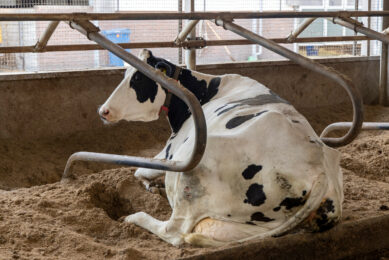US: More bird flu in cows, now humans also infected

The number of dairy farms infected with H5N1 avian influenza in the US continues to expand. In addition, the first human case possibly transmitted via cow has also been reported.
This was reported by the US Animal Health Service and the Centers for Public Health, Centers for Disease Control and Prevention and Animal and Plant Health Inspection Service (APHIS).
In Texas, an employee of an infected dairy farm was diagnosed with a bird flu infection at the end of last week. Laboratory research shows that the virus found is very similar to the strain originally found in dairy cattle in Texas and Kansas. It appears that the dairy cattle have been infected by (dead) wild birds. No major changes (mutations) have been found in the virus. Nevertheless, it is possible that people contract the virus through infected cows.
Bird flu causes eye problems in humans
The infected person had eye complaints, which has also been previously observed in people infected with a bird flu virus. When people in the Netherlands became infected with the H7N7 virus in 2003, they also had similar complaints. At the time, the H7N7 virus was detected in 89 people in the Netherlands, one of whom died. More than 450 people had eye complaints that may have been caused by the bird flu virus.
Hundreds of cases of human infections with various bird flu viruses have been reported worldwide, a significant portion of which are caused by an H5N1 virus.
11 dairy farms with bird flu
APHIS reported this week that highly pathogenic bird flu has been detected at a dairy farm in the state of New Mexico and at 5 dairy farms in the state of Texas. This brings the total number of infected dairy farms since the first case (25 March) to 11 in 4 different states (Michigan, Kansas, New Mexico and Texas). Investigations into more infections in the state of Idaho are still ongoing.
On infected farms, approximately 10% of the animals become ill. Production is down and the animals have mild symptoms of illness. The milk from infected animals appears to be thicker than normal, similar to colostrum, according to the USDA.
Cats are also sick
The virus can be detected in raw milk from infected cows. In connection with the outbreak in Texas, wild birds, cats and dairy cattle with symptoms have been tested for bird flu. A number of animals were found to be infected, Texas Health and Human Services reported.
Join 13,000+ subscribers
Subscribe to our newsletter to stay updated about all the need-to-know content in the dairy sector, two times a week.










